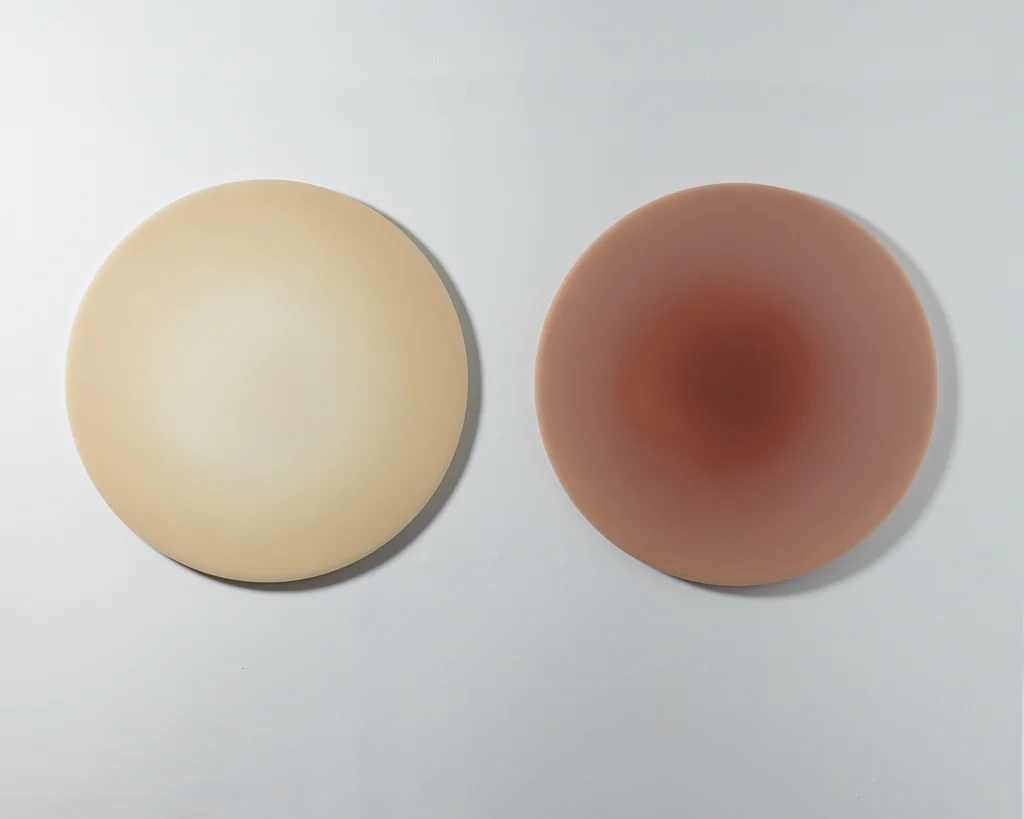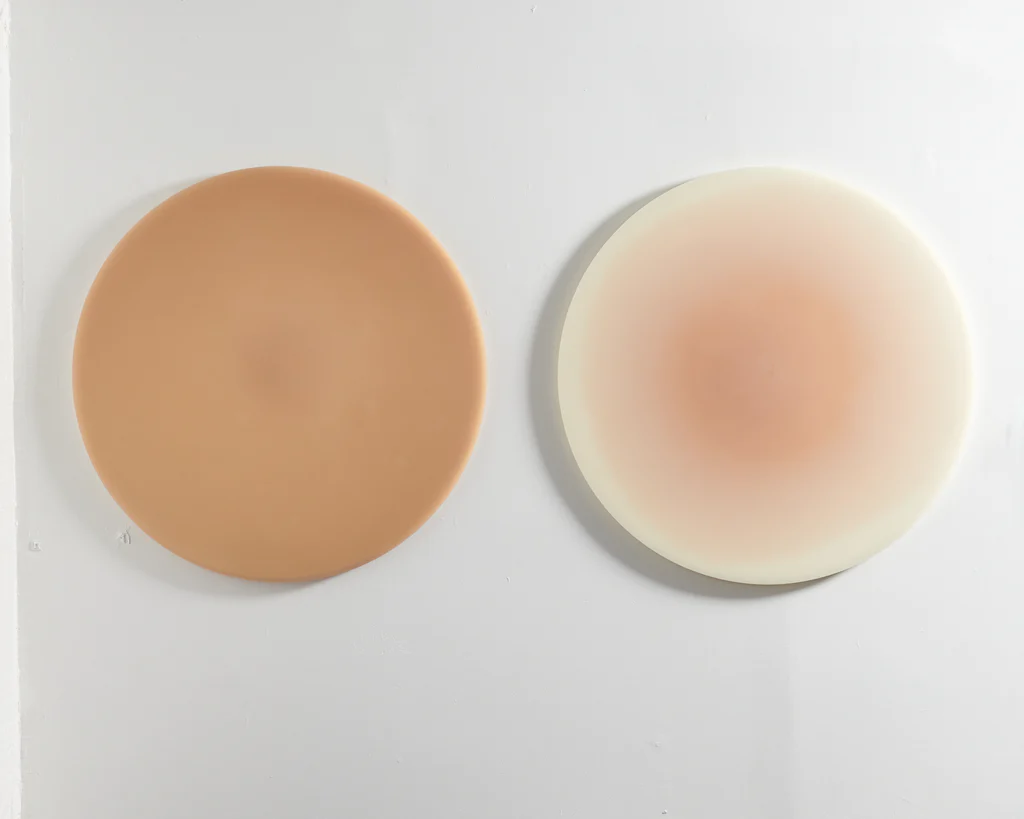
28 Oct TONE by Quincy Ellis: An Exhibition that Explores The Many Shades of Skin Tones
What color is nude anyway? It’s a question Quincy Ellis of Facture Studio, based in Greenpoint, Brooklyn, asked with “Tone,” his solo summer exhibition at Tuleste Factory, a Chelsea gallery founded by sisters Satu and Celeste Greenberg. On one level, the circular pieces are color studies, with gently blurred gradients of saturation and hue. But on a deeper level, they explore the idea that skin tones, like colors themselves, are many, varied, and multiple. Indeed, all the shades in the Tone Halo series are taken from Ellis’s own skin, showing the breadth and variety that can be present on a single body.
“This show is very personal to me” , explains Quincy Ellis. “I wanted to challenge the perception of ‘nude tones’ with this work, so it’s been more of an emotional process.”
Quincy’s work with Facture has given him an acute awareness of color, the properties of color in resin and how colors are perceived in different ambient conditions. He applies this same sensitivity but on a personal level in his exhibition, “TONE”, opening on May 16th at Tuleste Factory, a design and art space in Chelsea, New York.
TONE uses Quincy’s own range of nude tones as his color palette to explore and reference color by not only playing with saturation, gradients and depth but also his personal narrative. The forms and technical aspects serve to create a dialogue between constantly fluctuating conception of subtle tones and the context in which they engage.

The eight wall works include a series of four 48” round wall hangings that use a mix of the six colors chosen for the show. Each piece tells a story both within its own two blending and contrasting colors and then again in the context of the other three pieces. These serve as the foundational pieces of the tone story. Two 90”x20”x18” benches in the middle of the space also use two combining and shifting colors to continue the story off the walls and into a furniture design context. The other larger wall works build on Quincy’s sculptural cores to continue the tone narrative. Using the same tones for all the pieces, perception of each contextually is central to the work, producing a palette of visual subtleties, relationships and tonal changes in each piece that emulate our own fluid interpretation and relationship with colors.



